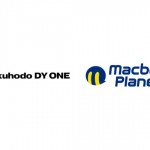プレミアム広告とRTBの関係性について Complex Media CEOより
>Small and large publishers alike are grappling with what it means to support and distribute content in the face of increasing audience and ad dollar fragmentation. One of the more obvious solutions being considered is for the publisher to become a niche player. Offering an audience a distinct diet of sports or fashion or parenting content certainly contains obvious values for contextual advertising. And it’s keeping with the idea of “audience adjacency” that calls to mind the traditional role of having magazine and newspaper brands as a focal point mass audiences.
But, except for a few publishers, the idea of presenting a narrow lens of content often bumps up against the need for scale – attracting enough ad dollars to maintain and grow a business. But for those content companies that are still growing their audience and are trying to drive higher CPMs through their direct sales, the pull of programmatic buying would seem to present a way to address the gaps until a content company can reach the point where it moves from breaking even to full blown growth.
Complex Media runs a digital network of sports, entertainment and lifestyle sites aimed at men 18- 34 and is run by CEO Rich Antoniello. The company recently added a food category to its portal with FirstWeFeast. And it’s been relying more on a range of social tools to target consumers who find its content through Facebook, Twitter, Reddit and other channels. While social is a big trend for publishers, Antoniello remains resistant to the lure of programmatic buying, arguing that it will dilute the company’s focus on driving premium.
RICH ANTONIELLO: We’re driving a stake in the ground even further when it comes to focusing on what we consider to be “uber-premium” content and control of our audience. The more meaningful our individual verticals are, we’ll have more leverage and scale to charge premium CPMs and stay away from the RTB and ad exchange arena. Our model is based on direct talks with large-scale advertisers. Of course, RTB and exchanges could add more revenue for us. But we also feel it would dilute what we’re trying to do, which is develop purely premium revenue, which over the long term, is how we will grow this business. We don’t want to rely on incremental dollars and automation.
Why do you feel exchange-based buying is inimical to your focus on premium, direct sales?
It’s a question of priorities. And RTB and ad exchanges are still in their infancy. I don’t fundamentally agree with the idea that you can have your cake and eat it too. You can’t think that you can pursue two different strategies and that pursuit of incremental revenue through exchanges somehow doesn’t erode your core. I would rather spend dollars that create more long-term value than short-term ease of buying at a much lower margin.
While we’ve been growing pageviews and revenue at a terrific pace, we’re nowhere close to where we want to be in terms of maximizing that premium audience play. When we do, then we can worry about yield optimization. But to worry about yield optimization when you’re still growing your top line as aggressively as we are, which is over 80 percent on an annual basis, I think that’s crazy— to turn around and give away that kind of margin through lower-priced CPMs on exchanges. The bottom line is that there’s only a finite amount of dollars and resources and time that people can spend on developing a business and ad sales. We’re going to continue to grow the premium and that side of things first. Maybe when we’re a much more mature business and our growth has slowed, we may have to do that, but we’re not in that situation.
A number of sites have had difficulty with selling premium display on their owned-and-operated sites. How do you manage that?
Two things. We have a level of influence over our O&O sites and with our partner sites. And we have a level of social media traction with a clearly young male audience that insures that our ad ops department can create more distinct opportunities for advertisers than others are able to offer. We’re able to sell Social Inbound Takeovers.
What is the “Social Inbound Takeover?”
The Social Inbound Takeover is an ad format aimed at selling a display spot against anyone who comes to our sites through social. You can buy just those distinct people if you want. It’s almost half of our pageviews. If you want to buy trends and things on point, we can direct ads to capture that traffic. We’ve have a lot of success with that format, because when certain stories get hot, and have people talking about a given set of topics on Twitter, Facebook, Digg or Reddit, it’s no shock that related advertising would also perform tremendously well too.
Was that format developed in-house or with a third party?
That was developed in-house, yes. It’s not like an outrageously difficult thing to build, but most companies don’t have 40 percent of their pageviews coming inbound from social either.
It wasn’t just, “Hey, a lot of people look at us in a big way as a social tool” and if we wanted to sell exclusively, that it was a huge premium opportunity for us to increase the CPM. We wanted give advertisers and users a certain exclusivity in terms what they were looking at. It was a double win. It was a win for the buy side and it was a win for the content side.
Pretty much all content companies rely on social to generate traffic boosts. What’s different about how Complex derives pageviews from social channels?
Now, a lot of publishers will talk about the value of traffic from social sites. But there’s a big difference with us: we don’t do it through promoted posts. We’ll do over 650 million pageviews across the entire Complex network this month. Of those, nearly 40 percent of those will come from social — Facebook and Twitter and a lot of other sources. And over 40 percent of those will come organically, not buying promoted posts.
We don’t sell it against a specific story or item on our network. We tell advertisers, “Hey, here’s the traffic against Sneaker Culture,” and if they want to buy our entire sneaker silo, say all of the people coming in from Facebook, Twitter and other social channels, they can do a takeover for just those consumers. Think about how powerful that is. Because it’s such a large block of our pageviews that come in from social, we’re able to disproportionately identify trend-oriented content and allow advertisers to attach themselves to those topics. How many people have as much mass against social on an inbound basis as we do? That’s the delineation; we’re able to do social at scale. And we do that because we don’t take shortcuts.
People used to question us, thinking that Complex was just a bunch of vertical niches. “Oh, so you’re going to be very limited in your reach,” we would hear. Well, no, not at all, as it turns out. What we’re doing by staying concentrated with a lot of verticals, is allowing us to maintain authenticity and credibility. As long as you’re disciplined about building up a particular set of verticals and being consistent with the tone and perspective to maintain your core demographics, you can actually have massive scale without giving up anything in exchange for a little more short-term revenue. I’m just applying real deal, common sense to publishing and it’s amazing how effective that is.
How does Complex view integrating e-commerce into its revenue mix? Is there an incremental aspect to that? Or could that represent a significant business in its own right?
There’s no question that e-commerce is a big thing, and a huge opportunity for us. As I’ve mentioned, about 40 percent of our pageviews come from social on an inbound basis. Something else to note, though, is about 75- to 77 percent of each of those social and search-driven pageviews are also product or style-related. Those pageviews are related to things from new music or movies to hoodies and jeans, all the way up to cars. So e-commerce is something that we can capture.
The correct thing for my business is to maximize anything along those lines to create more of a premium conversation between consumers and advertisers. It’s become so important for brand advertisers to drive ROI as well as awareness. Since we can do both, it’s not an either/or situation with respect to direct response or a brand campaign.
What about ad networks? Do you work with any?
No, we don’t do that. We don’t have a lot of “traditional remnant inventory.” In fact, we probably have more takeovers sold than most people have total ad units sold. We’re usually oversold on takeovers. That’s a great headache to have.
How will the introduction of the new food site, FirstWeFeast, alter Complex’s audience and redefine the brand? Certainly, food is related to lifestyle, but it’s still a world away from fashion and music.
Food is part of the culture from an attitudinal perspective. and the lifestyle that goes with that. Guys have more developed palettes nowadays. Where do they go that isn’t a service-oriented site like Yelp or some other user-gen review? Where do men who care about food, and want to know about [chef/founder of the Momofuku restaurant group] David Chang go? Where do men go if they want to know about recipes and the lifestyle that goes with it, but don’t necessarily want to look to older, upscale brands like Saveur?
Given the momentum that we have in organically developing the audience – not just for our own core sites, but also our partner sites – we can look at the landscape and try to identify where the holes are. We’re spending the money we have on a strategic basis to launch our own vehicles to fill those holes. Because we’re profitable and not running at a deficit, we can go self-fund these things. That is not only a reflection of our independence from having to rely on RTB or venture capital to run our business, it is the reason we have the ability to be independent in the first place.










